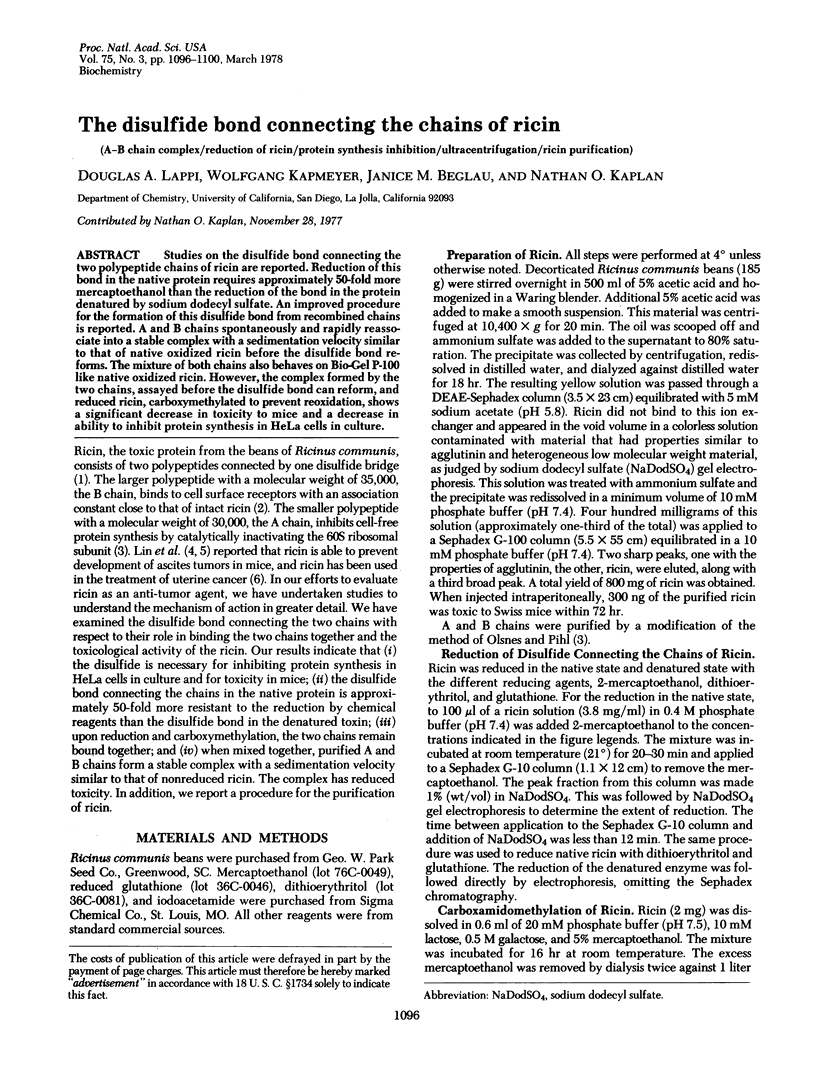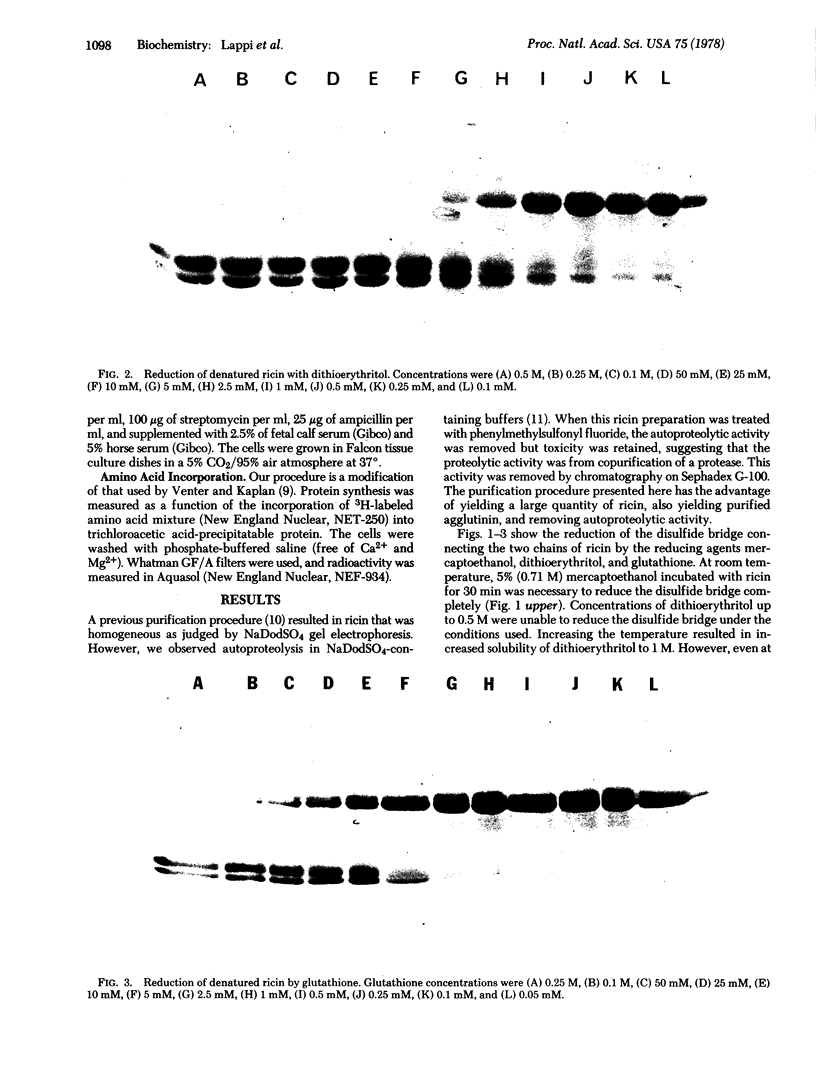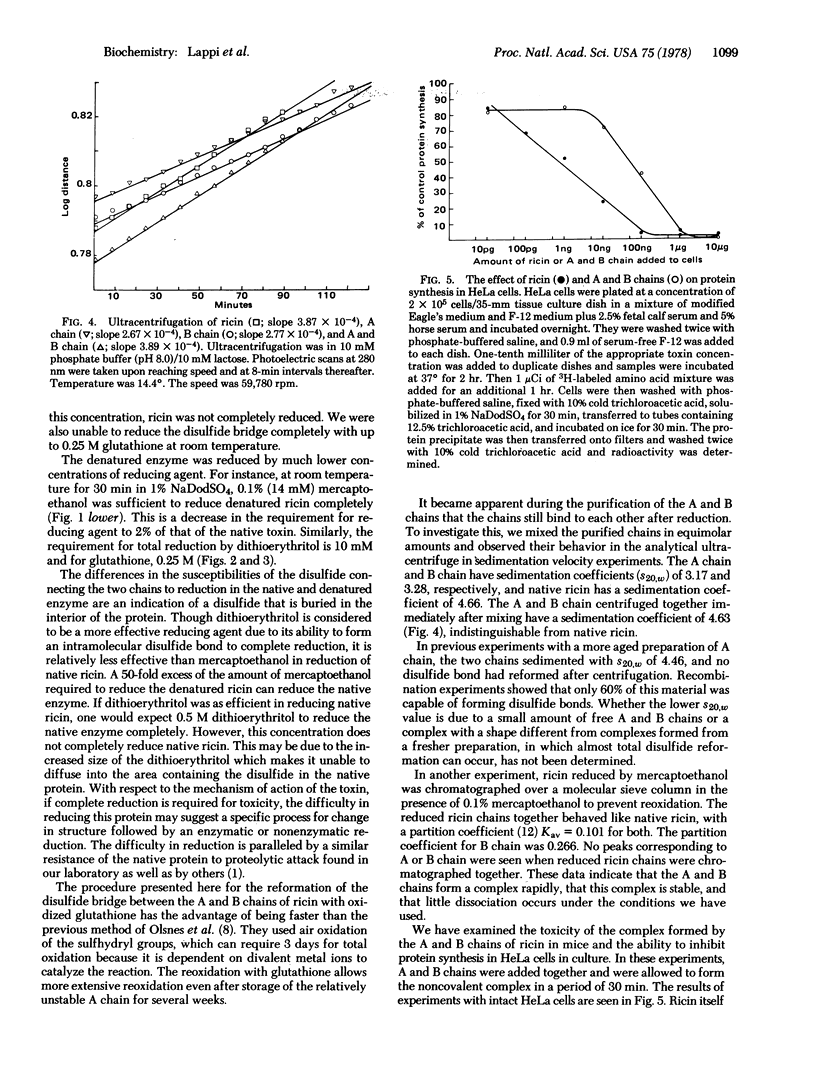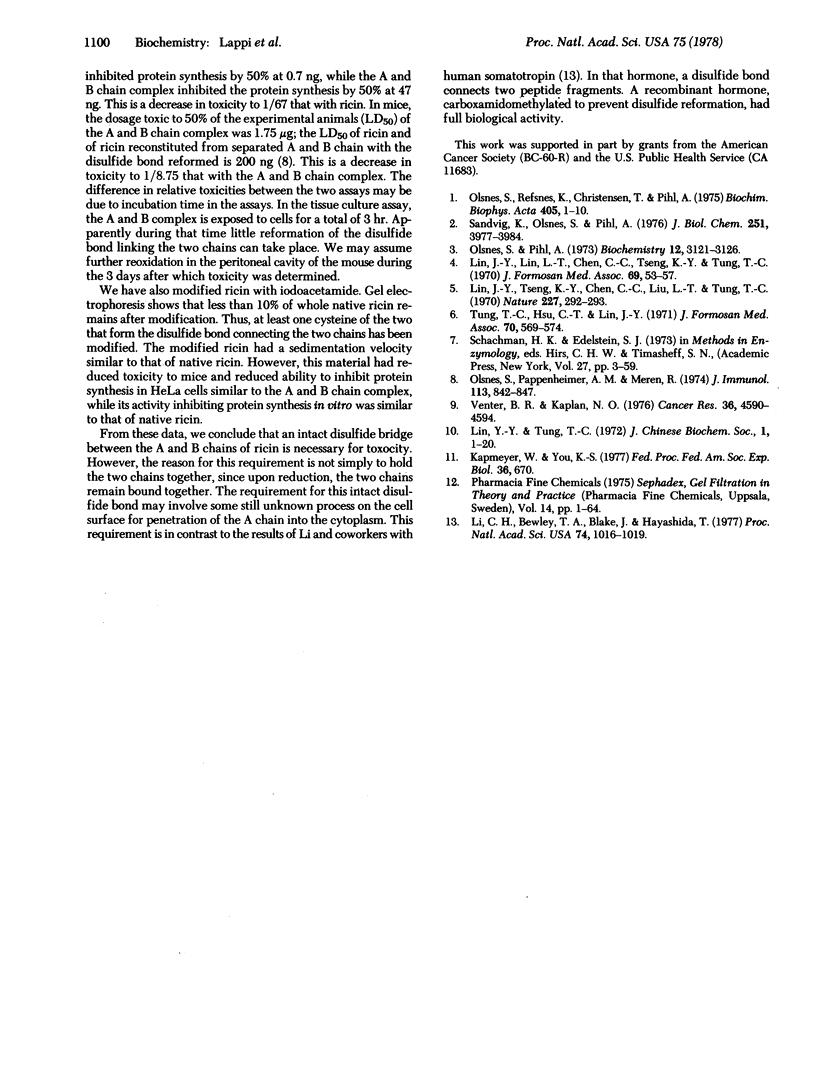Abstract
Studies on the disulfide bond connecting the two polypeptide chains of ricin are reported. Reduction of this bond in the native protein requires approximately 50-fold more mercaptoethanol than the reduction of the bond in the protein denatured by sodium dodecyl sulfate. An improved procedure for the formation of this disulfide bond from recombined chains is reported. A and B chains spontaneously and rapidly reassociate into a stable complex with a sedimentation velocity similar to that of native oxidized ricin before the disulfide bond reforms. The mixture of both chains also behaves on Bio-Gel P-100 like native oxidized ricin. However, the complex formed by the two chains, assayed before the disulfide bond can reform, and reduced ricin, carboxymethylated to prevent reoxidation, shows a significant decrease in toxicity to mice and a decrease in ability to inhibit protein synthesis in HeLa cells in culture.
Full text
PDF




Images in this article
Selected References
These references are in PubMed. This may not be the complete list of references from this article.
- Li C. H., Bewley T. A., Blake J., Hayashida T. Human somatotropin: restoration of full biological activity by noncovalent interaction of a natural and a synthetic fragment of the hormone. Proc Natl Acad Sci U S A. 1977 Mar;74(3):1016–1019. doi: 10.1073/pnas.74.3.1016. [DOI] [PMC free article] [PubMed] [Google Scholar]
- Lin J. Y., Lin L. T., Chen C. C., Tserng K. Y., Tung T. C. The inhibitory effect of crystalline ricin in Ehrlich ascites tumor. Taiwan Yi Xue Hui Za Zhi. 1970 Jan 28;69(1):53–57. [PubMed] [Google Scholar]
- Lin J. Y., Tserng K. Y., Chen C. C., Lin L. T., Tung T. C. Abrin and ricin: new anti-tumour substances. Nature. 1970 Jul 18;227(5255):292–293. doi: 10.1038/227292a0. [DOI] [PubMed] [Google Scholar]
- Olsnes S., Pappenheimer A. M., Jr, Meren R. Lectins from Abrus precatorius and Ricinus communis. II. Hybrid toxins and their interaction with chain-specific antibodies. J Immunol. 1974 Sep;113(3):842–847. [PubMed] [Google Scholar]
- Olsnes S., Pihl A. Different biological properties of the two constituent peptide chains of ricin, a toxic protein inhibiting protein synthesis. Biochemistry. 1973 Jul 31;12(16):3121–3126. doi: 10.1021/bi00740a028. [DOI] [PubMed] [Google Scholar]
- Olsnes S., Refsnes K., Christensen T. B., Pihl A. Studies on the structure and properties of the lectins from Abrus precatorius and Ricinus communis. Biochim Biophys Acta. 1975 Sep 9;405(1):1–10. doi: 10.1016/0005-2795(75)90308-6. [DOI] [PubMed] [Google Scholar]
- Sandvig K., Olsnes S., Pihl A. Kinetics of binding of the toxic lectins abrin and ricin to surface receptors of human cells. J Biol Chem. 1976 Jul 10;251(13):3977–3984. [PubMed] [Google Scholar]
- Venter B. R., Kaplan N. O. Diphtheria toxin effects on human cells in tissue culture. Cancer Res. 1976 Dec;36(12):4590–4594. [PubMed] [Google Scholar]






